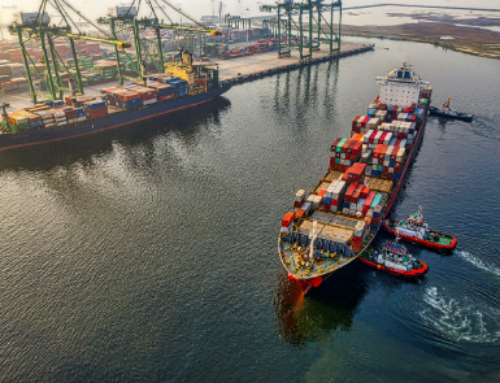Economic Pulse

Namibia’s annual budgetary process is a crucial aspect of the country’s economic planning and fiscal management. In previous years, the government has presented comprehensive budgets aimed at addressing key national priorities, fostering economic growth and ensuring the wellbeing of its citizens. This year, the Namibian FY2024/25 budget is anchored on three policy pillars: fostering domestic demand, accelerating investments in productive public infrastructure and cultivating fiscal prudence.
The budget tabled in prior years has typically reflected Namibia’s socio-economic landscape, considering factors such as global economic conditions, domestic challenges and developmental goals. It serves as a roadmap for allocating financial resources to various sectors, including education, health, infrastructure and social welfare, with the overarching objective of promoting inclusive and sustainable development.
Key components of the budget include revenue and expenditure projections, outlining how the government plans to generate revenue and allocate funds towards the different ministries or “votes”. Furthermore, the minister highlights policy priorities, economic forecasts, taxation reforms and strategies to address emerging challenges. When tabling the budget, Namibia’s commitment to transparency and accountability is evident in the detailed breakdown of revenue and expenditure within the budget. This transparency is prudent for fostering public trust and ensures that citizens are aware of the government’s financial decisions. An encouraging aspect of the budget over the medium-term expenditure framework (MTEF) is the government’s utilisation of insights and lessons gained from past fiscal years. This informed approach plays a key role in ensuring that fiscal policy is applied appropriately within the context of the prevailing economic climate.
The budget tabled on 29 February 2024 details substantial tax amendments aimed at providing relief and improving revenue mobilisation. A key resolution is the increase in the threshold for income tax on individuals to N$100,000 from the current N$50,000 with effect from 01 March 2024. Subsequently, the proposed tax table adjustments will increase the minimum of each bracket by N$50,000. The proposed changes are expected to put N$646 million back into the pockets of taxpayers. The ministry stated its intention to revise the long-standing tax brackets in 2025/26 and 2026/27 as a measure to counteract 11 years of bracket creep.
Another key reform includes the gradual reduction of the corporate tax rates to 28% over the outer years of the budget period. While this adjustment is generally well received for enhancing business competitiveness, the minister also disclosed a 10% dividend tax for resident shareholders that would become effective 01 January 2026. This dividend tax has the potential to offset the advantages gained from the reduction in the tax rate for local shareholders.
The significant tax amendments will, however, only be effective once all these proposals have been passed through Parliament and gazetted. The tax changes would thus be retrospectively applicable.
In previous years, positive updates on budget deficits were scarce. However, there has been a turnaround in the past three fiscal years, transitioning from a budget deficit of N$15.3 billion in 2020/21 to an estimated deficit of N$7.80 billion or 3.2% of the GDP in 2023/24. This marks the lowest estimated deficit since 2012/13, where we witnessed a surplus of N$292.2 million.
Revenue for Namibia is estimated to come in at N$81.1 billion for 2023/24 and grow by N$9.33 billion or 11.5% year-on-year to N$90.4 billion in 2024/25, with taxes on income and profits making up the largest share of the estimated total revenue at 36.3%. Taxes on income and profits comprise tax collections from individuals and corporates, and are expected to increase by 7.1% year-on-year to N$32.8 billion in 2024/25. Tax collections from individuals are expected to grow by 12.4% year-on-year to N$19.7 billion, while tax revenue from corporates is expected to fall by 0.63% year-on-year to N$11.5 billion in the coming fiscal year. The ministry estimates that taxes on income and profits will increase to N$34.6 billion in 2025/26 and N$37.4 billion in 2026/27.
Southern African Customs Union (SACU) revenues are estimated to make up about 31.0% of the government revenue in 2024/25, totalling N$28.0 billion. Demonstrating a proactive approach, the government is preparing for the upcoming maturity of the Eurobond in the next fiscal year. They are setting aside specific funds, including SACU receipts worth N$3.5 billion in 2024/25 and N$2.0 billion in 2025/26 for the redemption of this external debt. This underscores the ministry’s dedication to uphold fiscal discipline and ensure debt sustainability.
Budget expenditure is always closely examined as it directly corresponds with Namibia’s economic activities, providing a blueprint for how the government intends to allocate and spend funds within the country.
A remarkable turnaround in nominal GDP growth was witnessed, from averaging 2.8% from 2017/18 until 2020/21 to averaging 8.7% from 2021/22 until 2023/24. It should be noted, though, that growth for 2023/24 is an estimated figure and could still change. Total expenditure for 2023/24 is estimated at N$89.5 billion and expected to grow by N$10.6 billion or 11.8% year-on-year to N$100.1 billion, making the 2024/25 year the largest budget ever tabled. Despite expenses projected to increase more rapidly than revenue, the ministry states that this is driven by their commitment to enhance services, address urgent needs, and develop infrastructure within the country.
The government has committed to reverse the slowdown in public investments and tackle the backlog in infrastructure development. This commitment is evident in the substantial 58.1% year-on-year increase in the development budget, allocating a total of N$12.7 billion for development projects during 2024/25. This increase will be welcomed by the public, as the increased investments should accelerate infrastructure development across various sectors, including transportation, water, energy, improvement of the operational environment for businesses and the living standards for Namibians. It is, however, worth noting that this allocation is still well below the Ministry of Finance’s target of 20% of expenditure.
Strategic allocations, like the designated funds for railway infrastructure, will target the repair and upgrade of vital segments of the national railway network, a step toward improving trade infrastructure and positioning Namibia as a connection between landlocked countries and the rest of the world. This initiative is expected to generate additional employment opportunities and contribute to an overall boost in the economy. The specific allocation for the education sector underscores the acknowledgment of the crucial need to address infrastructure gaps within it. The government is earmarking N$970 million for the refurbishment and construction of classrooms, thereby addressing inequalities in access to education, particularly for rural and low-income communities.
In a nutshell, the 2024/25 budget reflects the government’s strategic reaction to the upturn in revenue collection initiated during the 2023/24 budget year. It is evident that certain fiscal benefits are being directed towards the Namibian population through additional tax reforms, fiscal responsibility, and an increased development budget aimed at bolstering investments in infrastructure. This shift is prompted by the surge in revenue collection. Moving forward, government expenditures are expected to shift from being a hindrance to economic activity to making a positive contribution, not only through consumption but also via capital investments.
Zane Feris
Research Analyst

IJG believes in tailoring their services to a client’s personal and business needs.
For more information, visit www.ijg.net






